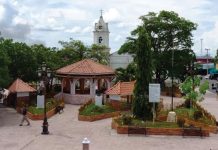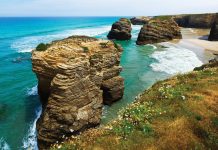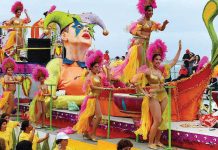Matanzas es la capital oculta tesoros en todas partes, no solo las playas merecen la pena en esta parte del mundo. En primer lugar, es zona de contrastes y el viajero de ojo experimentado no podrá menos que recrearse en la belleza del lugar. Bajo la magnífica luz del sol caribeño se percibe mejor la gama cromática de los verdes, la variedad del colorido de sus más de 920 flores y los matices de los numerosos peces que pueblan las aguas de sus costas calientes. De esta sorprendente combinación de tonos surge una provincia que podría ejemplificar una primavera tropical, si existiese la primavera en el trópico.
Económicamente, Matanzas despuntó en casi todos los sectores y aportó ganancias a Cuba desarrollando todo tipo de actividades: energética, industrial, ganadera, agrícola, etc. Matanzas descolló especialmente en el sector portuario y en el cultivo de caña de azúcar. Cuando se comenzó a implantar este último se importó una enorme cantidad de esclavos, la mayor de toda la isla.
La mezcla de blancos y negros, que dio como resultado, dejó su herencia en Matanzas; no sólo los rasgos físicos de los lugareños de hoy la reflejan, también dejó en ellos el calor de África. Así, del sonido de los tambores finalmente nació en Matanzas la rumba, el primer baile nacional de Cuba. Aún en nuestros días sigue siendo una danza muy popular y el Festival Rumbero que se celebra anualmente en el Teatro Sauto, en la capital de la provincia, es uno de los espectáculos más importantes de Matanzas.
La joya de Matanzas, la que más fama aporta a la provincia, es la rutilante ciudad de Varadero, con su interminable extensión de playas, sus apabullantes cadenas hoteleras y su lujoso estilo de vida. No obstante, Matanzas tiene muchos lugares hermosos que no desmerecen a su lado.
Si tú prefieres algo más auténtico, que refleje de una manera más fiel la sociedad, y sentir algo del sabor cubano original, la ciudad de Matanzas es una buena opción, con sus decadentes pero encantadores edificios coloniales de estilo neoclásico. Iglesias católicas, un teatro y varios museos son algunos ejemplos de estas construcciones.
La ciénaga de Zapata hará las delicias de los más aventureros, por tratarse de un humedal prácticamente inexplorado cubierto de una densa vegetación y poblado de aves y otros animales muy interesantes.
Desde el punto de vista cultural, Matanzas es una de las zonas más ricas de Cuba. Contiene una gran cantidad de museos que te ilustrarán sobre los temas más variados y no deberías marcharte sin visitarlos, como el curiosísimo Museo Farmacéutico, único de su estilo en toda América, el Museo Histórico Provincial, y el estremecedor Museo de la Ruta del Esclavo.
Históricamente, Matanzas fue una pieza clave en la defensa de la isla durante la Revolución Cubana, pues allí en Playa Girón, en la costa sur de la provincia, tuvo lugar la primera de muchas derrotas que sufriría el ejército estadounidense a manos del pueblo cubano. La región había padecido ataques con anterioridad a lo largo de la historia, con lo que estaba muy bien pertrechada para lo que se avecinaba, y no tardó en organizarse de forma rápida e idear un contraataque. Si visitas la provincia de Matanzas, aprovecha para recorrer alguno de los diversos museos en los que la guerra y la revolución dejaron su legado.
Matanzas es la segunda provincia de mayor extensión de Cuba por detrás de La Habana y una de las que más han contribuido al desarrollo económico de la isla. Se encuentra en la región occidental de Cuba y, exceptuando las tierras altas del noroeste y centro de la provincia, toda la superficie de Matanzas es llana. Con un clima tropical casi todo el año, atrae a muchos turistas que llegan en busca de sol y playa, ya que Matanzas contiene una de las perlas más preciadas de Cuba, Varadero.
 Matanzas is the hidden capital treasures everywhere, not only the beaches are worthwhile in this part of the world. First, it is a zone of contrasts and the experienced eye traveler can not help but revel in the beauty of the place. Under the magnificent light of the Caribbean sun you can better see the color range of the greens, the variety of colors of its more than 920 flowers and the nuances of the many fish that populate the waters of its hot coasts. From this surprising combination of tones emerges a province that could exemplify a tropical spring, if there were spring in the tropics.
Matanzas is the hidden capital treasures everywhere, not only the beaches are worthwhile in this part of the world. First, it is a zone of contrasts and the experienced eye traveler can not help but revel in the beauty of the place. Under the magnificent light of the Caribbean sun you can better see the color range of the greens, the variety of colors of its more than 920 flowers and the nuances of the many fish that populate the waters of its hot coasts. From this surprising combination of tones emerges a province that could exemplify a tropical spring, if there were spring in the tropics.
Economically, Matanzas excelled in almost all sectors and brought profits to Cuba developing all kinds of activities: energy, industrial, livestock, agriculture, etc. Matanzas excelled especially in the port sector and in the cultivation of sugarcane. When the latter began to be implanted, an enormous number of slaves was imported, the largest of the whole island.
The mixture of whites and blacks, which gave as a result, left their inheritance in Matanzas; not only the physical features of the locals of today reflect it, it also left them the warmth of Africa. Thus, from the sound of the drums, the rumba was born in Matanzas, Cuba’s first national dance. Even in our days it is still a very popular dance and the Rumbero Festival that is celebrated annually in the Teatro Sauto, in the capital of the province, is one of the most important shows in Matanzas.
The jewel of Matanzas, the one that brings the most fame to the province, is the glittering city of Varadero, with its endless extension of beaches, its overwhelming hotel chains and its luxurious lifestyle. However, Matanzas has many beautiful places that do not detract from your side.
If you prefer something more authentic, that reflects in a more faithful way the society, and feel something of the original Cuban flavor, the city of Matanzas is a good option, with its decadent but charming neoclassical colonial buildings. Catholic churches, a theater and several museums are some examples of these constructions.
The swamp of Zapata will delight the most adventurous, because it is a virtually unexplored wetland covered with dense vegetation and populated by birds and other very interesting animals.
From the cultural point of view, Matanzas is one of the richest areas of Cuba. It contains a large number of museums that will illustrate you on the most varied topics and you should not leave without visiting them, such as the very curious Pharmaceutical Museum, the only one of its kind in America, the Provincial Historical Museum, and the thrilling Museum of the Slave Route.
Historically, Matanzas was a key player in the defense of the island during the Cuban Revolution, because there in Playa Girón, on the south coast of the province, took place the first of many defeats that the US military would suffer at the hands of the Cuban people. The region had suffered previous attacks throughout history, which was very well equipped for what was coming, and soon became organized quickly and devise a counterattack. If you visit the province of Matanzas, take the opportunity to visit one of the various museums where the war and the revolution left their legacy.
Matanzas is the second largest province of Cuba behind Havana and one of the most contributed to the economic development of the island. It is located in the western region of Cuba and, except for the highlands of the northwest and center of the province, the entire surface of Matanzas is flat. With a tropical climate almost all year, attracts many tourists who come in search of sun and beach, since Matanzas contains one of the most precious pearls of Cuba, Varadero.














